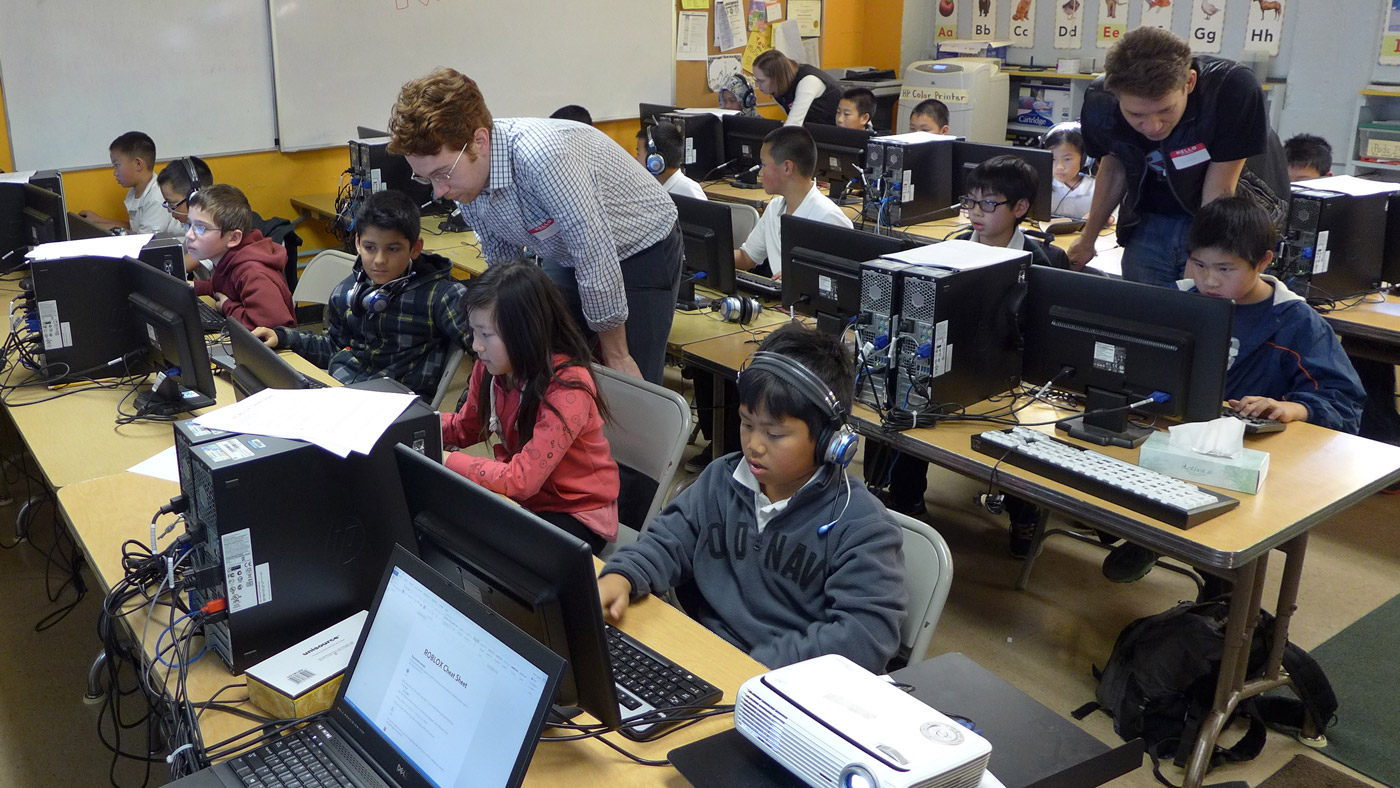Blog Archive
ROBLOX is all kinds of fun, but there’s no doubt that our community members gain valuable life skills by engaging in the creative process of going from gamer to game creator. Coding, digital modeling, communication, entrepreneurship, business savvy – these are all things anyone can pick up by participating in ROBLOX’s bustling creator community. Even educators have started taking notice of ROBLOX’s potential as a learning tool, and we’re working to make that more common – starting locally.
A couple weeks ago, five members of the ROBLOX team headed to the E.R. Taylor Elementary School in our Bay Area home to introduce basic coding to a group of roughly 70 third- through fifth-graders. That might seem too young to start building and coding in ROBLOX Studio, but today there really is no “too young” to start absorbing tech knowledge.
“No matter which career the students decide to pursue, they will be using computers,” said Karen Taylor, the E.R. Taylor teacher who sparked the visit. “Starting computer science in elementary school gives our students the skills and the confidence to excel in middle, high school, and beyond.”
ROBLOX is at the intersection of fun and learning, making it an exciting educational platform for young students. While there are many educational games in rotation at E.R. Taylor – teaching subjects from language arts and social studies to math and science – ROBLOX has the distinct advantage of offering active participation and creativity.
“The unique and creative thing about ROBLOX is that students have the ability to make their own game,” Karen said. “Creating a game requires higher-order thinking skills than simply playing a game.”
We only scratched the surface of creating a complete game, but gave students the confidence to start experimenting on their own. In each of the two sessions, we presented the students, who volunteered to participate in the after-school workshops, a simple building and coding assignment: create a brick that changes colors and then explodes. (This is similar to what we taught in our Hour of Code tutorial series.) After we presented the assignment, the students worked at their own pace with a basic instructional sheet, while our team members worked one-on-one with students to help them through the challenges.
After the workshop, we noticed several students going further than the assignment required, continuing to play with variables and building tools to see what else they could make happen.
“I think ROBLOX is great for kids who want to learn coding,” Karen added. “It’s good for problem solving and debugging. Students can write a line of code and then see if works the way they expected. If it doesn’t work, they need to re-read carefully to see what they missed in the code.”
That sentiment is indicative of many players’ first forays into scripting Lua on ROBLOX. Experiment with something original or something shared (e.g., a free model), test your modifications to see what happens, rinse and repeat.
Even those who are a little too young to grasp coding concepts can play with ROBLOX Studio from a creative standpoint. What starts as a single ROBLOX part can quickly transform into a living world; we saw that, once younger students launched into ROBLOX Studio, they discovered the Toolbox (and the thousands of models it contains) and started to create whatever they imagined. Almost everyone imagined something with zombies.
Young people learn by doing — engaging in the creative process — and we provide a positive and social environment for that to happen. We’re still learning about ROBLOX’s place in the classroom, but we’re excited about the prospect of our platform being used as an educational vehicle. Would you be interested in having ROBLOX be part of your school curriculum or after-school program? If so, let us know how you think it could be used as a learning tool!
